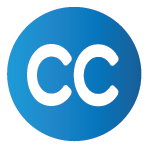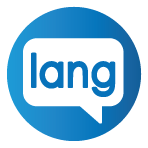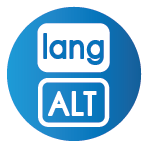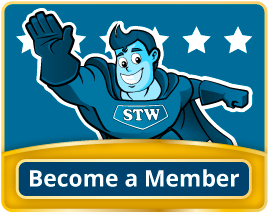2nd Grade Common Core: 2.NBT.3
Common Core Identifier: 2.NBT.3 / Grade: 2
Curriculum: Number And Operations In Base Ten: Understand Place Value.
Detail: Read and write numbers to 1000 using base-ten numerals, number names, and expanded form.
95 Common Core State Standards (CCSS) aligned worksheets found:
Place value blocks (base 10 blocks) and expanded form.
Level:
Filing Cabinet
Logged in members can use the Super Teacher Worksheets filing cabinet to save their favorite worksheets.
Quickly access your most used files AND your custom generated worksheets!
Please login to your account or become a member and join our community today to utilize this helpful feature.
What 3-digit numbers are represented by the base-10 place value blocks?
Level:
Cut out the number strips and sort them into groups of equivalent numbers. Also tell which are written in standard form, which are word names, and which are written in expanded form.
Level:
Read the 4-digit numbers and tell how many thousands, hundreds, tens, and ones are in each.
Level:
Write each word name in standard form. Then write each standard form number in word name form. Includes numbers up to 999.
Level:
Write the four-digit numbers that are shown on the abacus illustrations.
Level:
Say the names of the 4-digit numbers. Includes a homework page and a quiz.
Level:
Students are given sheets of paper with large digits printed on them. The teacher says a number. (example: fifteen thousands, sixty) Students arrange the digits to make the number.
Level:
Say the names of the 3-digit numbers. Includes a parent read aloud and a quiz.
Level:
Students must use the digits in the box to find the answers to the questions; Up to 4 digits.
Level:
Pairs of students are given digits. Students arrange the digits to make the specific numbers given by the teacher.
Level:
Use place value blocks to build 4-digit numbers up to 9,999.
Level:
Four different students are each given a card with a large digit on it. The caller reads a number, such as one thousand, five hundred seven. Students hold up their numbers for the class to see, and arrange themselves in a line to make the number.
Level:
Students are given digits. Students arrange the digits to make the numbers given by the teacher.
Level:
Students are given digits. Students arrange the digits to make the numbers given by the teacher. They they answer questions about the numbers.
Level:
What 4-digit number is represented by the thousands, hundreds, tens, and ones in the pictures of place value blocks?
Level:
Students line up in front of the classroom and hold up signs with digits on them. They rearrange themselves to make different numbers.
Level:
Compare 4,092 with other numbers using the symbols <, >, and =. Tell whether or not the P.V. cubes show 4,092. Find a hundred more and a hundred less than 4,092.
Level:
Place base 10 blocks on the place value mat to learn about 3-digit numbers.
Level:
Then tell what 100 more and 100 less than 467 equals. Tell how many 100s, 10s, and 1s are in 467. Complete the number line to show numbers that come after and before 467.
Level:
Here are some more 4-digit place value exercises. Write the numbers in expanded and word form and complete the place-value tables for each given number.
Level:
Print on card stock and assemble the number wheel. Students spin the wheel and read the numbers to a teacher, parent, or friend.
Level:
Decode the secret numbers using the cypher key at the top of the page. Then add them together.
Level:
Tell how many thousand cubes, hundreds flats, ten sticks, and ones cubes are in each number.
Level:
These review word problems require student knowledge of place value and rounding.
Level:
This one might be a little trickier for students because it's a four-digit number with only two non-zero digits.
Level:
Which block set makes 952? Is 952 odd or even? Complete the number line. Tell how many 100s, 10s, and 1s.
Level:
Use these task cards in a variety of ways to practice converting two-digit numbers from their number forms, word forms, and expanded forms.
Level:
Use scissors to cut out the place value squares (ones, tens, hundreds, thousands). Glue each above the correct digit. Then color each digit according to the directions.
Level:
Write 506 in expanded form. Then tell the value of each digit. Complete the number line to tell what comes before and after 506.
Level:
Students read the 4-digit numbers aloud and the teacher scores them.
Level:
Here's a more advanced version of the Egyptian number system for your students. This version will have students translating 5-digit numbers.
Level:
Draw straight lines to match each three-digit number with its word name.
Level:
Draw a ring around the place value blocks that show three thousand, forty-nine. Finish the incomplete number line. Write the value of the digits.
Level:
Use place value blocks and this learning mat to explore 2-digit numbers.
Level:
Make your own three digit numbers with this place value chart.
Level:
The s.n. for this worksheet is two thousand, three. Complete each box by filling in information about PlaceVal blocks, expanded notation, and the values of the digits.
Level:
Write this number in expanded form, like this: 2,000+300+50+4. Then calculate 10 less than 2,354. And find 1,000 more than 2,354.
Level:
Spin the wheel and try to read each 3 and 4-digit number aloud. Students can read numbers to a classmate, a parent, or a teacher.
Level:
Determine whether the number 780 is odd or even. Choose the set of blocks that represent 780. How much is 10 more and 10 less than 780?
Level:
Tell how many hundreds, tens, and ones are shown. Then write the number on the blank line.
Level:
Use this worksheet to get more practice with place value of numbers with 3 digits. Students will fill in a place-value table and write out numbers in words and expanded form.
Level:
Why are there fences around graveyards? To discover the answer to this math riddle, students will answer a series of mental math addition problems. Addends are multiples of 10, 100, or 1,000. (example: 4,000+2,000)
Level:
This S.N. worksheet features the number three thousand, one hundred twenty-six. Students must use place value and arithmetic skills to answer the questions.
Level:
Write 810 in expanded form. Then complete the number line. Tell which P.V. blocks show 810. Determine if 810 is even or odd.
Level:
Remind students of the different ways to write three-digit numbers with this anchor chart. It shows the standard, written, and expanded forms, as well as the expanded notation.
Level:
Show the set of place value blocks represents 349. Write 349 in expanded form. State how many 100s, 10s, and 1s are in the special number.
Level:
Students read the 3-digit numbers aloud. Includes 2 score sheets for teachers.
Level:
Add the money amounts to determine how much you'll spend on your family members at the Secret Santa Market.
Level:
This page shows a simple example of how to write a four-digit number in standard form, written form, expanded form, and expanded notation.
Level:
Spin the number wheel and read the numbers aloud to a friend, your parents, or your teacher.
Level:
Students are asked to read the 2-digit numbers aloud. Includes two scores sheets.
Level:
Roll three dice to make a number. Then write the number in expanded form, and make a sketch of the place value blocks.
Level:
To solve these problems, students must use subtraction skills and their knowledge of place value.
Level:
This special number worksheet is much like the others. It'll ask kids to determine the value of each digit, complete the number line, add, subtract, and write the number as an expanded addition problem.
Level:
For this special number, students must give the value of the digits 5, 7, and 1. Then circle the set of PlaceVal cubes that show 1,507. After that, they add 100 and 1,000 to this number.
Level:
Use these task cards in engaging ways to help students understand place value and converting 3-digit numbers between their expanded, word, and number forms.
Level:
What did the teddy bear say after she had finished her supper? To find out, write the 5-digit numbers in standard form. Then match the numbers with the letters in the solution.
Level:
Use "greater than" and "less than" symbols to compare 123 to other numbers. Complete the number line. Tell how many hundreds, tens, and ones.
Level:
Use base 10 blocks (place value blocks) to solve the subtraction problems on this worksheet.
Level:
Practice place value up to the thousands place with this printable puzzle. Match the base ten blocks with the correct number.
Level:
Reinforce place value skills for numbers of 4 digits with this printout. First, students will complete the place-value table. Then they'll write the number in expanded and word form.
Level:
Make the smallest and largest number possible by rearranging the given digits.
Level:
On this worksheet, students will answer a set of questions pertaining to the number six hundred thirty-four. The will tell whether this number is even or odd. Add and subtract using this number. Find the number using place value blocks.
Level:
The special number on this worksheet is six thousand, eight hundred twenty. Students answer a set of place value questions.
Level:
Write the values of the digits in 201. Write the special number in expanded form. Compare using the symbols <, >, and =.
Level:
The ancient Egyptian place value system is very similar to our own. In this activity, students will learn to read and write ancient Egyptian numbers using a simple place value method.
Level:
Cut out the letters in the words ONE HUNDRED and rearrange them to make new words. This activity includes primary-ruled lines for students in kindergarten through second grade.
Level:
Basic addition facts. The first addend for each problem is between 0 and 8. Cute wizard pictures.
Level:
Practice worksheet with basic addition facts. The first addend is between 0 and 2. The second addend is between 0 and 9. Includes pictures of cute monsters.
Level:
Adding practice sheet. The first addend ranges from 0 to 5. Playful monkey pictures decorate the worksheet.
Level:
Adding - Basic facts practice drill worksheet. The first addend ranges from 0 to 4. Includes pictures of horses.
Level:
The waddle of penguins are all lined up on the ice flow to count by twenty-fives. Some are missing! Students write the correct numbers on the penguins.
Level:
Kids look through a grocery store ad paper and choose 3 foods they'd like to buy. They cut out the pictures and prices, then glue them onto the worksheet. Then they must add the prices of the 3 items together to find the sum.
Level:
More basic addition fact practice. The first addend is between 0 and 7. Kitty cat pictures.
Level:
Write the domino addends, then count the dots to find the correct sum.
Level:
These word problems require students to find the sums of four-digit addends.
Level:
Try to write the answers to all 50 Basic Addition Facts (0 -9) as quickly as possible.
Level:
These free printable cards have pictures of base-10 place value blocks that represent 3-digit numbers.
Level:
Read and solve these 3-digit addition word problems. There is plenty of space for students to show their work.
Level:
Basic addition worksheet. First addend is between 0 and 9. Includes cartoon frog pictures.
Level:
Practice sheet with forty-three basic addition facts. The first addend ranges from 0 to 3. Includes pictures of roller coasters.
Level:
This worksheet allows students to practice working with the properties of addition using only basic numbers.
Level:
Another basic facts drill. The first addend is between 0 and 6. This worksheet has race car graphics.
Level:
This is a continuation of the other Ancient Egyptian worksheet. This time, kids use Ancient Egyptian numbers as a model for creating their own base-10 number system.
Level:
The ancient Egyptian number system is similar to our own. In this lesson, students will learn to read and write three-digit numbers and their Ancient Egyptian equivalents.
Level:











